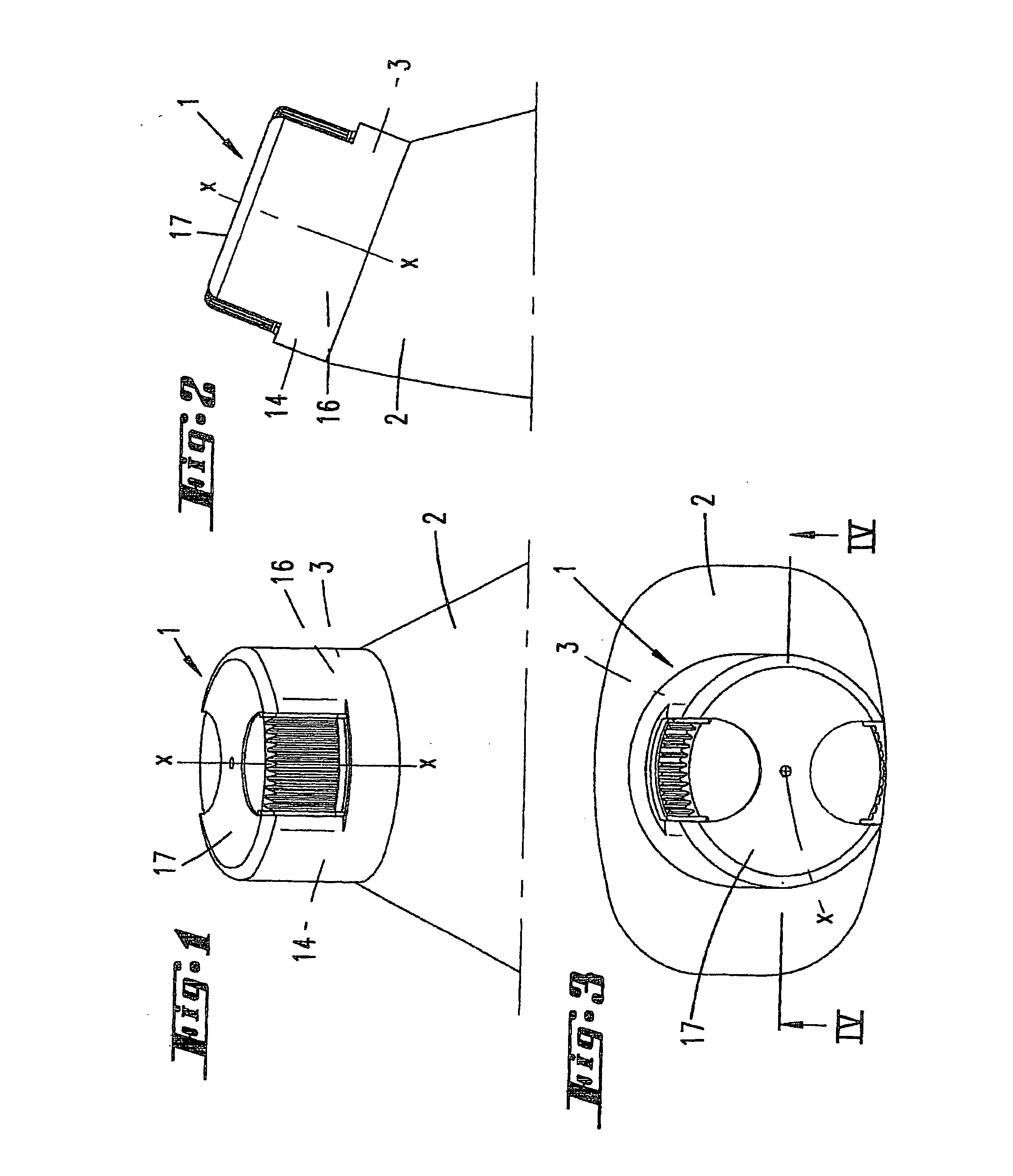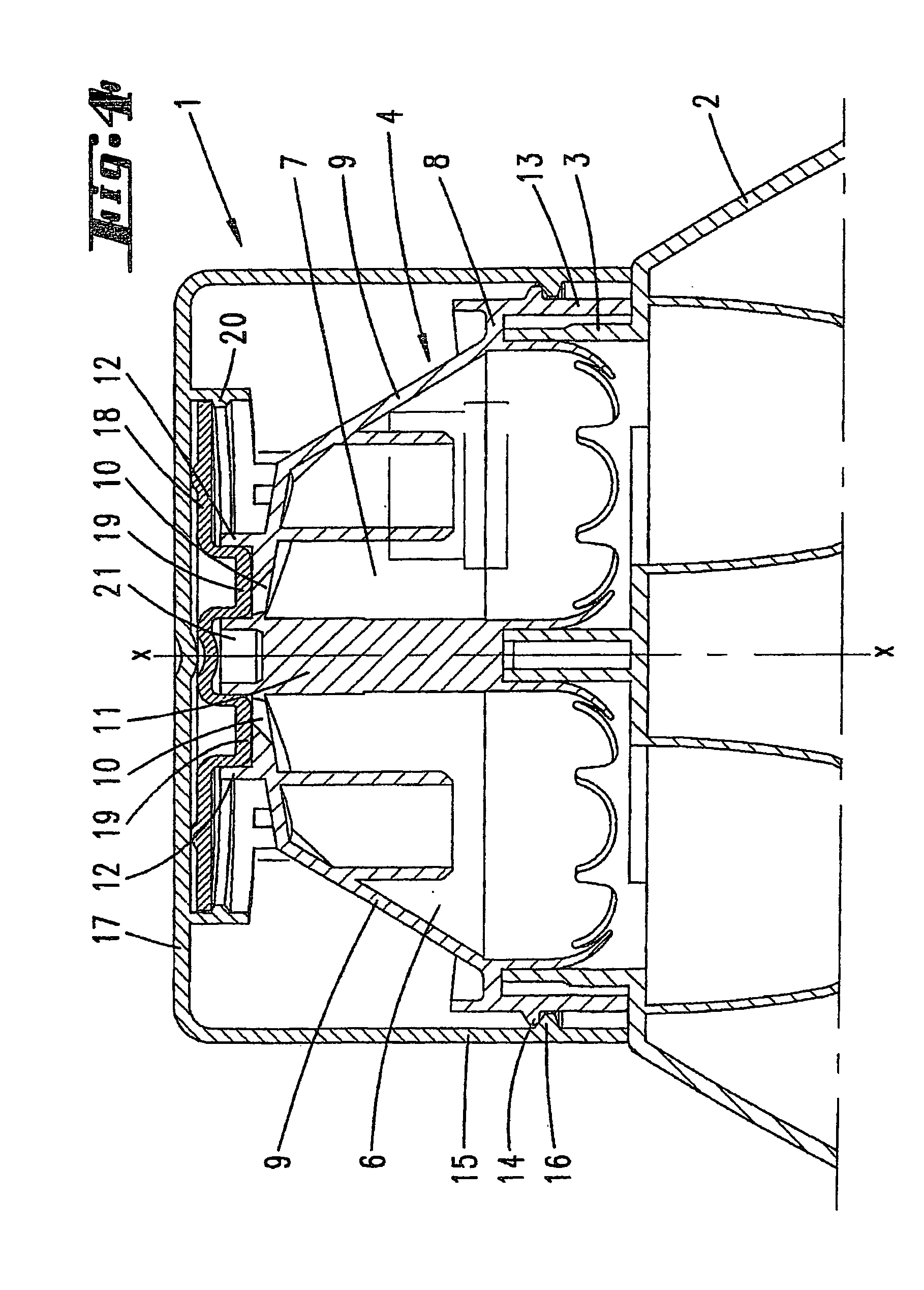Closure cap and combination of a closure cap and a receiving vessel
a technology of closure cap and receiving vessel, which is applied in the direction of drinking vessels, liquid dispensing, containers, etc., can solve the problems of not being able to provide a rotary closure cap with a central axis, and achieve the effects of reducing the diameter, preventing abrasion, and facilitating the mounting of the holding pla
- Summary
- Abstract
- Description
- Claims
- Application Information
AI Technical Summary
Benefits of technology
Problems solved by technology
Method used
Image
Examples
first embodiment
[0032] The holding plate 18, which is illustrated in FIGS. 1 to 8, has a cap-side latching bead 20 engaging over its circumferential edge, this latching bead ensuring on the one hand that the holding plate 18 is held captively on the closure cap 1 and on the other hand that the holding plate 18 can rotate freely on the underside of the cap base 17.
[0033] The two closure stoppers 19 are disposed diametrically opposite, eccentrically with respect to the axis of rotation x, at a spacing from one another which corresponds to the spacing between the two mouthpiece openings 10 of the discharge head 4.
[0034] The diameter of each closure stopper 19 is matched to the internal diameter of the annular walls 12 of the mouthpiece openings 10.
[0035] As seen in the direction of rotation of the holding plate 18, rotary-alignment parts 21 are formed on the underside of the holding plate 18, between the two oppositely-disposed closure stoppers 19. These rotary-alignment parts 21 are formed as circl...
second embodiment
[0038] FIGS. 9 to 11 show the closure cap 1, in which the diameter of the holding plate 18 is reduced compared to the first exemplary embodiment, having approximately half the diameter by comparison with the latter. An inwardly facing latching pin 23 is formed on the cap base 17 to rotatably fix the holding plate 18. This latching pin 23 is preferably formed integrally with the cap base 17, from the same material, and to rotatably fix the holding plate 18 has an annular collar 25 which engages over a central aperture 24 in the holding plate 18.
[0039] On account of the selected formation, the aperture 24 is positioned centrally between the two closure stoppers 19. The way in which the closure stoppers 19 and rotary-alignment parts 21 are disposed and oriented, and also their respective size ratios, correspond to those of the first embodiment.
[0040] To facilitate fitting of the holding plate 18, radially oriented, web-like centering formations 26, which point downward from the cap ba...
PUM
 Login to view more
Login to view more Abstract
Description
Claims
Application Information
 Login to view more
Login to view more - R&D Engineer
- R&D Manager
- IP Professional
- Industry Leading Data Capabilities
- Powerful AI technology
- Patent DNA Extraction
Browse by: Latest US Patents, China's latest patents, Technical Efficacy Thesaurus, Application Domain, Technology Topic.
© 2024 PatSnap. All rights reserved.Legal|Privacy policy|Modern Slavery Act Transparency Statement|Sitemap



